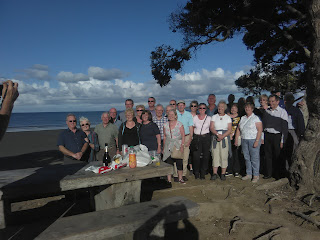California - 15th October
Friday 15th October Weather Sunny 72/38
Visalia, California
Settled in 1852, Visalia is the oldest permanent inland settlement between Stockton and Los Angeles. As the county seat and largest city of Tulare County, Visalia serves as the economic centre to the region known as the Sequoia Valley, one of the most productive single agricultural areas in the United States. Visalia lies within miles of the tallest mountain range in the contiguous United States, the Sierra Nevada and is the closest major city to Sequoia National Park, home to some of the largest living things on Earth, the Giant Sequoia trees. It is known as "Where The Valley Meets The Giants." Visalia is situated in the heart of California’s agricultural San Joaquin Valley, approximately 230 miles (370 km) southeast of San Francisco and 190 miles (310 km) north of Los Angeles. Visalia is the 46th largest city in the state of California and the 204th largest in the United States. Often referred to as the Gateway to the Sequoias and nicknamed The Jewel of the Valley, Visalia has an estimated population of 125,921 and spans over 28.6 square miles (74.1 km2) in Central California. Additionally, the Visalia Metropolitan Area is home to approximately 426,276 residents.
Calico was developed in 1881 during the largest silver strike in California. Located at the side of towering King Mountain, the town was named for the variety of colours in the mountain that were "as purty as a gal's calico skirt." Calico boomed during 1881-1896; but the end came to the silver rush in 1896 and by 1904 Calico had become a ghost town.
Today the historic silver mining town lives on as one of the few original Old West mining camps. One-third of Calico's original structures still stand; the remaining buildings have been carefully reconstructed to capture the Old West spirit. Walk Main Street and experience the life of the townspeople; see the blacksmith shop, the old school house, and do a little gold panning of your own.
Tour Maggie's Mine and visit the Mystery Shack, a tilted house that let's you observe water running uphill. You can take a ride around town on a narrow gauge mining train.
Main Street is lined with mercantile stores - from the General Store to the Apothecary.
The beautiful Tehachapi Valley is an oasis located in the mountains between the San Joaquin Valley and the Mojave Desert, offering a cool haven from the arid desert heat and the sprawling lowlands of the valley. Featuring sparkling blue skies that turn into star filled nights with unending depth, the beauty of Tehachapi is seen in every setting. The diversity of the area offers something for everyone, small town neighbourhoods, mountains filled with oak and pine trees sheltering the most rustic to the most luxurious homes, sprawling ranches and everything in between, all beautifully displayed in the splendour of four wonderfully distinct seasons.
Situated between the Great Basin Desert to the north and the Sonoran to the south (mainly between 34 and 38°N latitudes), the Mojave, a rain-shadow desert, is defined by a combination of latitude, elevation, geology, and indicator plants.
Elevations are generally between three and six thousand feet, although Death Valley National Park includes both 11,049-foot Telescope Peak and the lowest point in the United States 282 feet below sea level at Badwater.
Temperatures are a function of both latitude and altitude. Although the Mojave Desert has the lowest absolute elevation and the highest maximum temperature (134°F in Death Valley), it is north of the Sonoran Desert and its average elevations are higher. As a result, its average temperatures are lower than those of the Sonoran.
The Mojave has a typical mountain-and-basin topography with sparse vegetation. Sand and gravel basins drain to central salt flats from which borax, potash and salt are extracted. Silver, tungsten, gold and iron deposits are worked.
The Journey
Crossing the Mojave Desert this morning to Calico (10.45) where you will visit the old reconstructed mining town, this is also our lunch stop, the Calico Restaurant or Old Miners Café. From here we continue through the Mojave passing Barstow, and travel towards Tehachapi, for our afternoon stop (14.30) leave room for the home-made Pies …..the last part of the journey takes us into the agricultural area of the San Joaquin Valley, you will see many different types of nut trees and vines (not for wine, but for raisins). Arriving at our Hotel, The Holiday Inn,(17.30), inside and outside pools available, a restaurant with a full menu, light meals or full meals, the bar also serves snack foods. The hotel is situated on its own, but does have some nice walking areas around it.
Departure Details
for
Saturday 16th October
Luggage OUTSIDE doors by 07.00
Departure for Modesto at 08.00 (via Yosemite)
Heading first to Oakhurst (09.30) for the morning stop, it is then onto Yosemite, our first stop at Mariposa Grove (11.00) , this is where you shall join the tram tour 75 mins) , once we leave we travel a very scenic highway, we have a photo stop to view Half Dome and El Capitan. The next stop is at Yosemite Lodge from here there are walks, or the free park shuttle bus to Yosemite Village. Later we make our way out of Yosemite and onto Modesto.
Richard
1.702.557.2373


Comments
Post a Comment